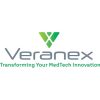The market for connected drug delivery devices is rapidly expanding, with expectations the industry will grow by 9.1% annually until 2030.[i] Key factors driving market growth include an aging population increasingly suffering from chronic diseases and a shift towards treatment self-administration outside of a hospital setting.
Connected devices already enable remote patient monitoring by collecting real-time data, such as injection date and time, and these benefits are likely to grow with time. Here are three areas where manufacturers are exploring new uses of digitalization in drug delivery to improve care.
Optimizing Devices Pre- and Post-launch
Connected devices provide a host of data that, if used effectively, will be critical to improving device design and, in turn, healthcare outcomes. During the clinical trial phase, data around device performance offer insights on whether patients are using the device as intended, ensuring devices are intuitive and that common errors in administration are not being made, and that the full dose is delivered. If fully exploited, this data could be instrumental in identifying best design practices for manufacturers and providing valuable support to human factors testing. In addition, this data could help manufacturers design more informative instructions for use (IFU). Once on the market, data on device use could supplement other information as part of routine post market surveillance.
Data Integration for Holistic Care
Connected devices are already capturing and storing useful medication data, but data from different information systems and health-related applications are not yet being effectively integrated to create a holistic picture of a patient’s health and treatment adherence. Without this overview of the patient journey, the ability of healthcare professionals and providers to provide tailored advice or improve understanding about a therapy is limited.
Challenges also lie in the different approach towards data integration and privacy across regions. In European countries, for example, data privacy laws differ at both national and regional levels, creating barriers for companies looking to launch their products across multiple markets.
Once we begin to navigate these difficulties, there is opportunity to use data from smartwatches and other wearables to gather more detailed lifestyle information, giving insight into a patient’s sleep and exercise habits, for instance. This would enable a truly personalized picture of disease progression and treatment efficacy.
Streamlining Data Capture
Apps used in conjunction with connected drug delivery devices help patients track and manage their treatments and allow data sharing with healthcare professionals as well as the option to provide instructions and training. The role of healthcare apps is poised to undergo a change soon.
The emergence of 5G will allow devices to send data directly to the cloud—removing the necessity for a secondary application or device. This is likely to improve remote tracking as patients will not need to install apps and upload treatment information—though they may wish to use apps to access their data. Older patients and those less familiar with technology, in particular, may benefit from this capability.
In the coming years, manufacturers will be thinking about how to introduce or expand digitalization to get the most out of their devices. While data capture with connected devices has many uses, ultimately it should be used to make meaningful changes that will help improve patient therapy compliance and healthcare outcomes. With time, we should be able to use information gathered from connected devices to better understand the needs of patients and healthcare professionals and to create devices that work more effectively for different therapies, patient groups, and markets.
[i] Biospace. (2022). Injectable Drug Delivery Market Size to Reach USD 83.38 Billion in 2030. https://www.biospace.com/article/injectable-drug-delivery-market-size-to-reach-usd-83-38-billion-in-2030-/?key%C2%ADwords=covid







